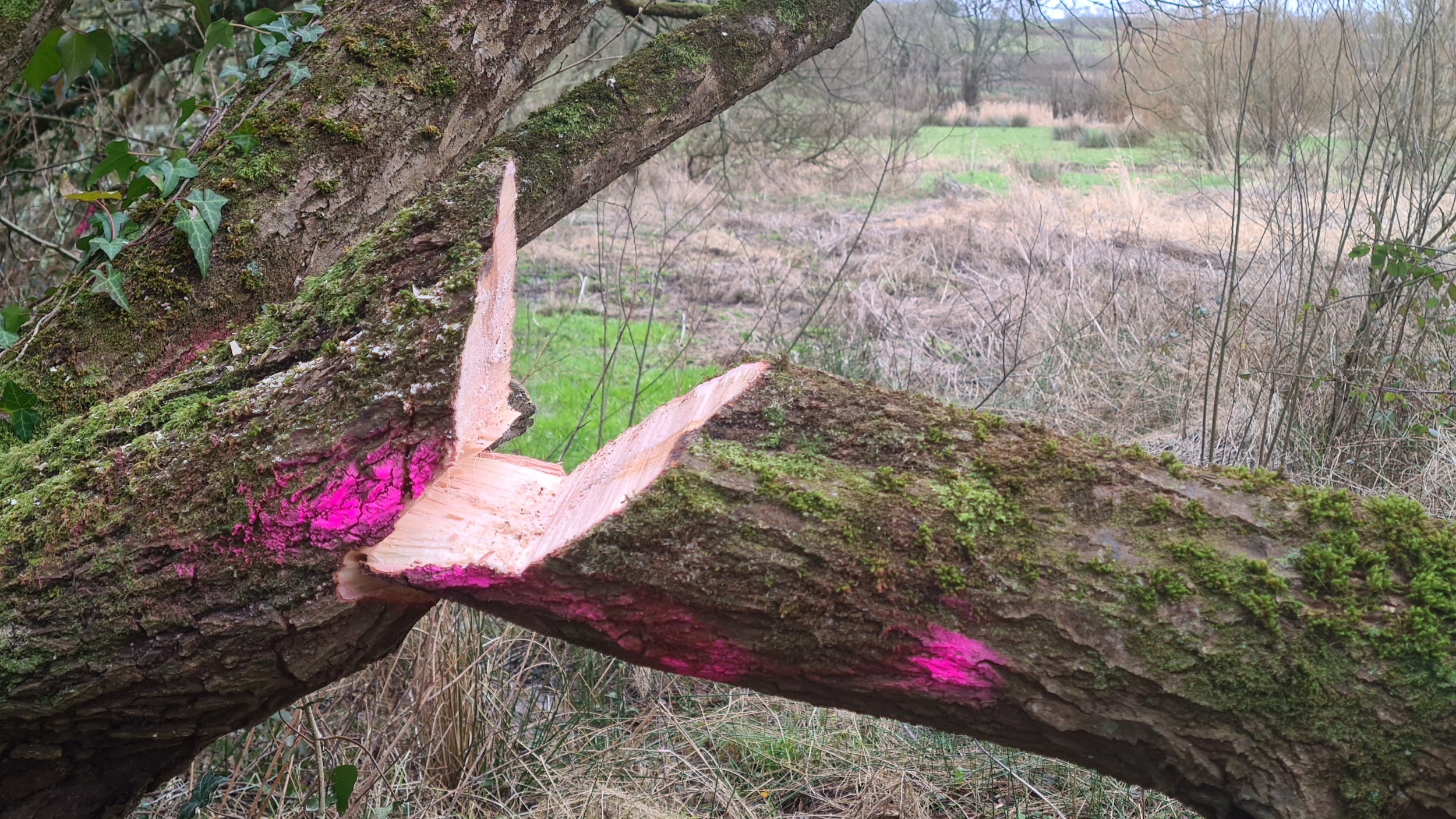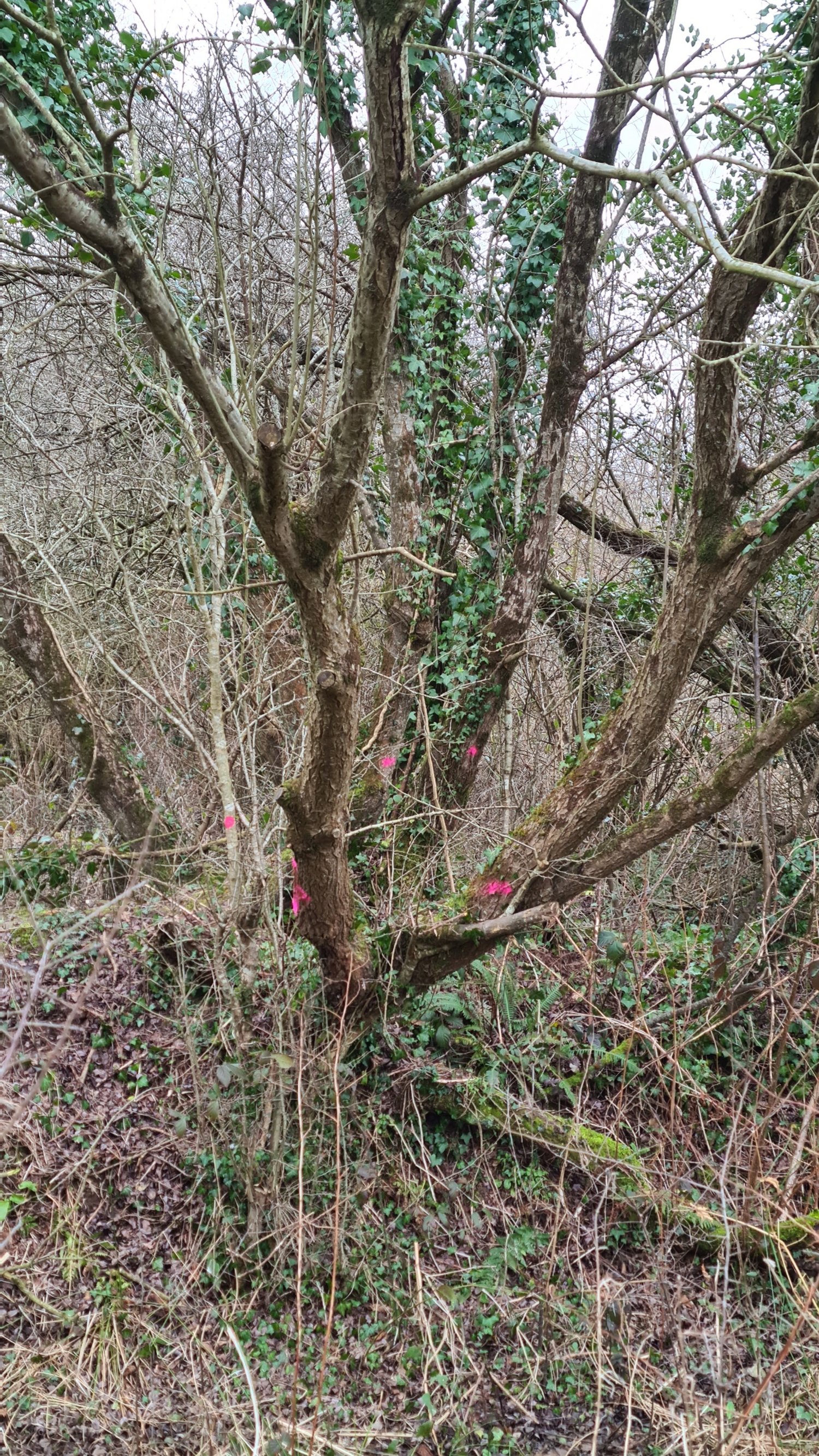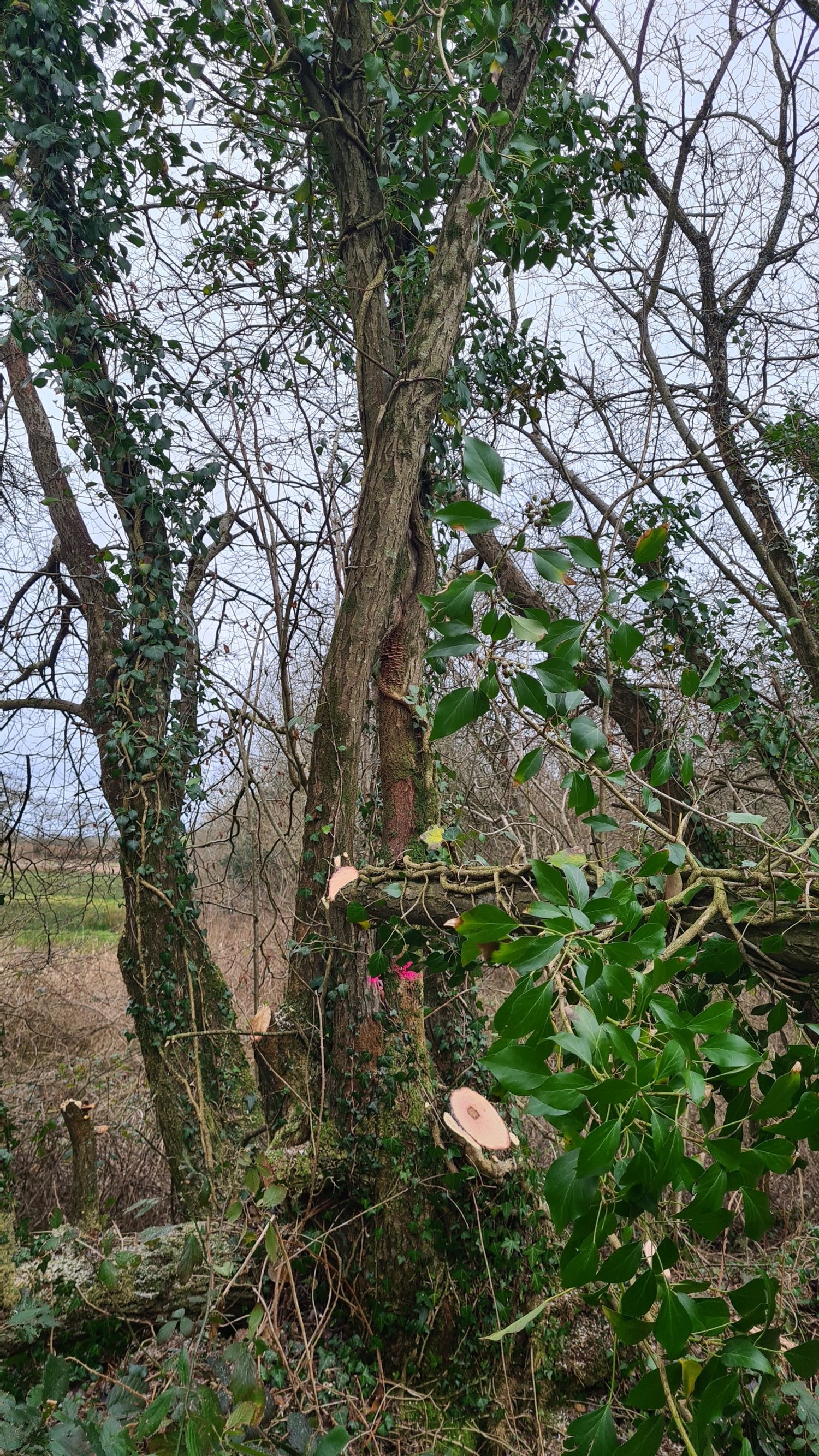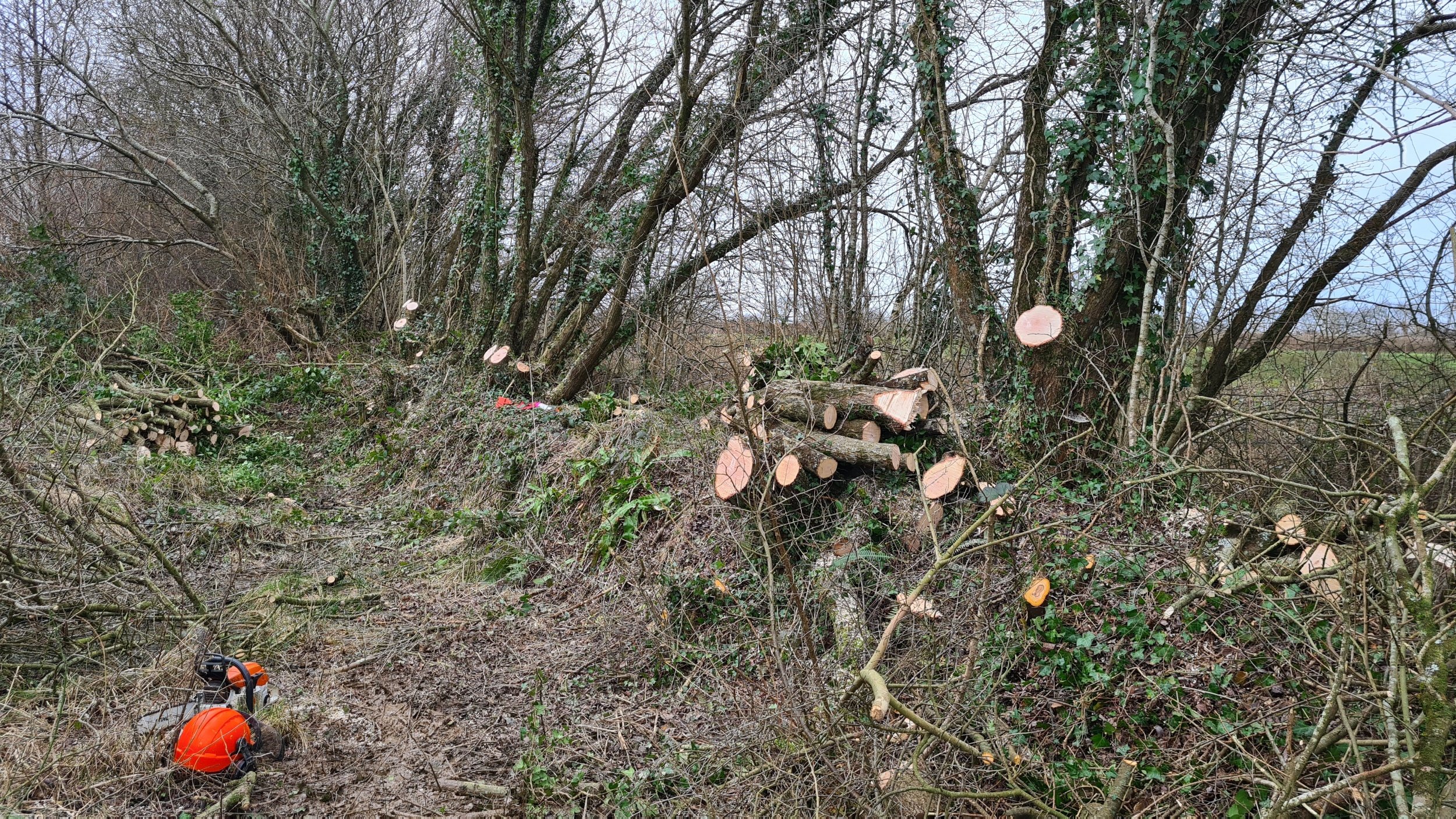Woodland Management
Today I was coppicing some Salix cinerea (Grey Willow) for a client on the edge of some wet woodland. Wet woodland is quite a rare habitat and supports many different organisms, including many invertebrates, amphibians, and bats. The food web of wet woodland is quite extensive.
Most of the trees were heavy, forward-leaning trees. This means a dog tooth cut was the safe and correct cut. The new Sthil 261c worked a dream.
Select felling the willow has enabled more light to the woodland floor, which enables other tree and plant species to grow, creating opportunities for biodiversity. When the cut trees regrow, a range of invertebrate species will inhabit this regrowth at different stages. At the later stages of the willows growth, bees and butterflies will feast on the pollen from its Catkins. Regeneration helps organisms complete their life cycles and provides input for the ecosystems food web.
Habitat stacks were made from cut wood, which will be home to further invertebrate communities. Voles, mice, hedgehogs and other small mammals will also use the stacks as shelter, cover and food forage.




